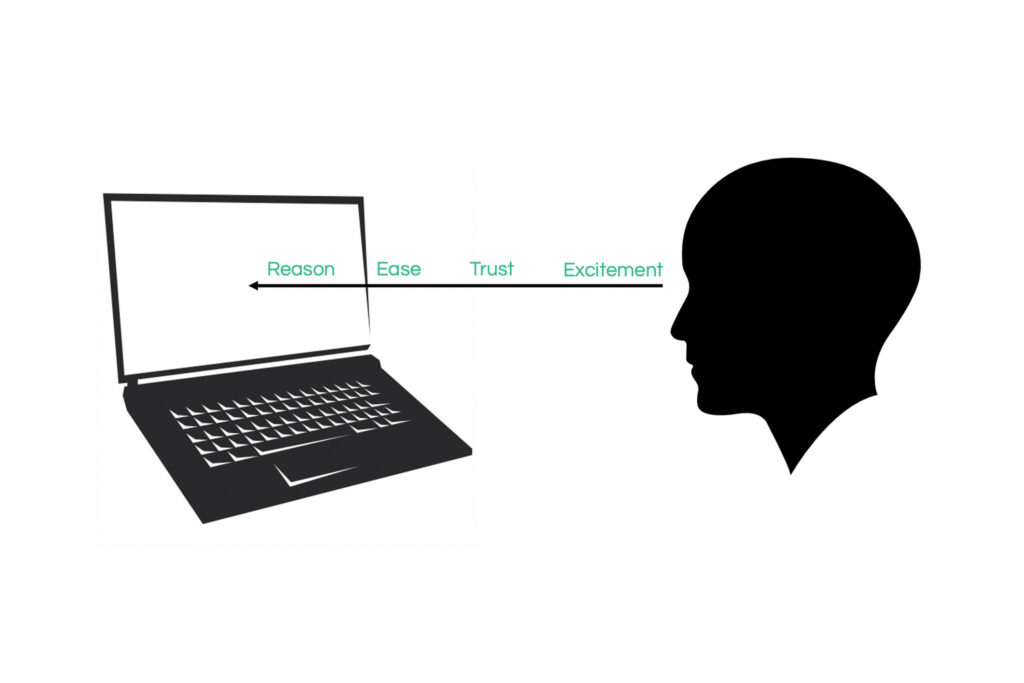Strategic selling is crucial to mobilising people behind your ideas, and seeing them come to life in the real world.
For anyone in the consulting, media, marketing or sales businesses, strategic selling is a way of life. And, beyond that, pretty much anyone operating inside a complex organisation needs to master strategic selling if they want to get anything big done.
Obviously the first step is having something good to say, knowing how it solves a problem, and knowing how to get done (see ‘Red Thread’). But how do you get it across?
Over the course of the last decade, I have been in hundreds of situations that required the selling of a strategic point of view. And as a pitch doctor or a coach, I’ve helped hundreds of different people to get better at selling a strategic point of view.
But this week was a first – being brought in to help a team formulate the best way to sell strategy via Zoom.
It’s absolutely not easy. Strategic selling requires the explanation of difficult concepts, as well as the engagement of complex emotional motivations. Not easy through a video camera.
But one thing that is very noticeable is that all the good things people have learnt about body language, and timing, and presentation theatre go straight out of the window when it comes to pitching via Zoom, to be replaced by a much more rational, low energy approach.
Which is totally understandable. You are probably pitching from your spare room, and it’s awkward enough being seen there, let along trying to put on a performance.
But it’s worth remembering that the device on which you are being viewed is also capable of accessing any piece of recorded entertainment, from Oscar winning movies to the most sublime operas, so growling your way through a few bullet points is always likely to be a bit underwhelming.
I believe the essence of Zoom pitching is no fundamentally different from any other form of pitching, and begins with one key point of acceptance: even if your ideas or your product are awesomely compelling, your presentation is not about you – it’s about the audience.
So how do you compel an audience? By framing your delivery from the audience’s point of view.

Firstly, get people excited
Before you build any kind of story, you need to make some kind of emotional impact that gets people’s attention and gives them something to attach to. That’s absolutely not going to be repeating their question, or even worse, explaining your methodology. It’s likely to be:
Unexpected (fortunately there’s a lot of quite boring Zoom conventions, so lots to play with)
Personal to them (for example showing a deep understanding of the personally relevant problem you can solve for them)
Personal to you (something that gets you excited about getting them excited)
Secondly, build some trust
Assuming that you can get people’s attention and interest, they will enter a subconscious evaluation of how reliable you are. Whilst presenting there are a series of different things you can do to build trust, in a way that feels comfortable.
Demonstrate competence (both in your area of expertise, and in your management of this rather odd situation)
Convey honesty (much harder through a screen than in person, so it’s more important than ever to find opportunities to be candid)
Listen, listen, listen (the endless over-talking of Zoom makes this extremely difficult, so it’s more important than ever to provide structured space to talk and respond)
Thirdly, make it easy to buy
Assuming people are excited, and trust you, you should be well on the way, but the inner inertia of any sensible cynic with too much on his or her plate will be to find almost any reason to pull back. It’s your job to remove any rocks that you can from this person’s path. For example:
Create simplicity – building an argument isn’t like painting, it’s like sculpture – you remove every bit of unnecessary information to reveal the whole. Too much of anything just makes it harder to see
Remove barriers – if you know they are there (process, budget, time etc etc) don’t just let them slide through unnoticed – call attention to them yourself and address them
Enable memory – clear structures and summaries make it much easier for someone to sell on your behalf once you’ve gone. That’s why people like 3s (as expressed here in part 3 of point number 3…it is possibly to overdo it!)
Finally, give people a reason
Hopefully, it’s quite unlikely you’ll forget this bit. It’s normally what people are doing from about 20 seconds into any strategic selling presentation – giving hundreds of different reasons to choose their solution. Normally one good one, clearly articulated is plenty.
After all, the main point of reasons isn’t really to persuade people – but to allow people to persuade other people when you’re not there.
None of this is easy. I hate having to do sell strategic ideas through a laptop screen, without being able to really look people in the eye. But doing it badly is a really easy habit to fall into. Just remember, it’s not about you – it’s about the audience!
Hook Strategy helps organisations to move forwards with shared strategic clarity. If you are an organisation seeking unified thinking, get in touch at contact@hookstrategy.com or by calling +44 (0)7780 481717.

